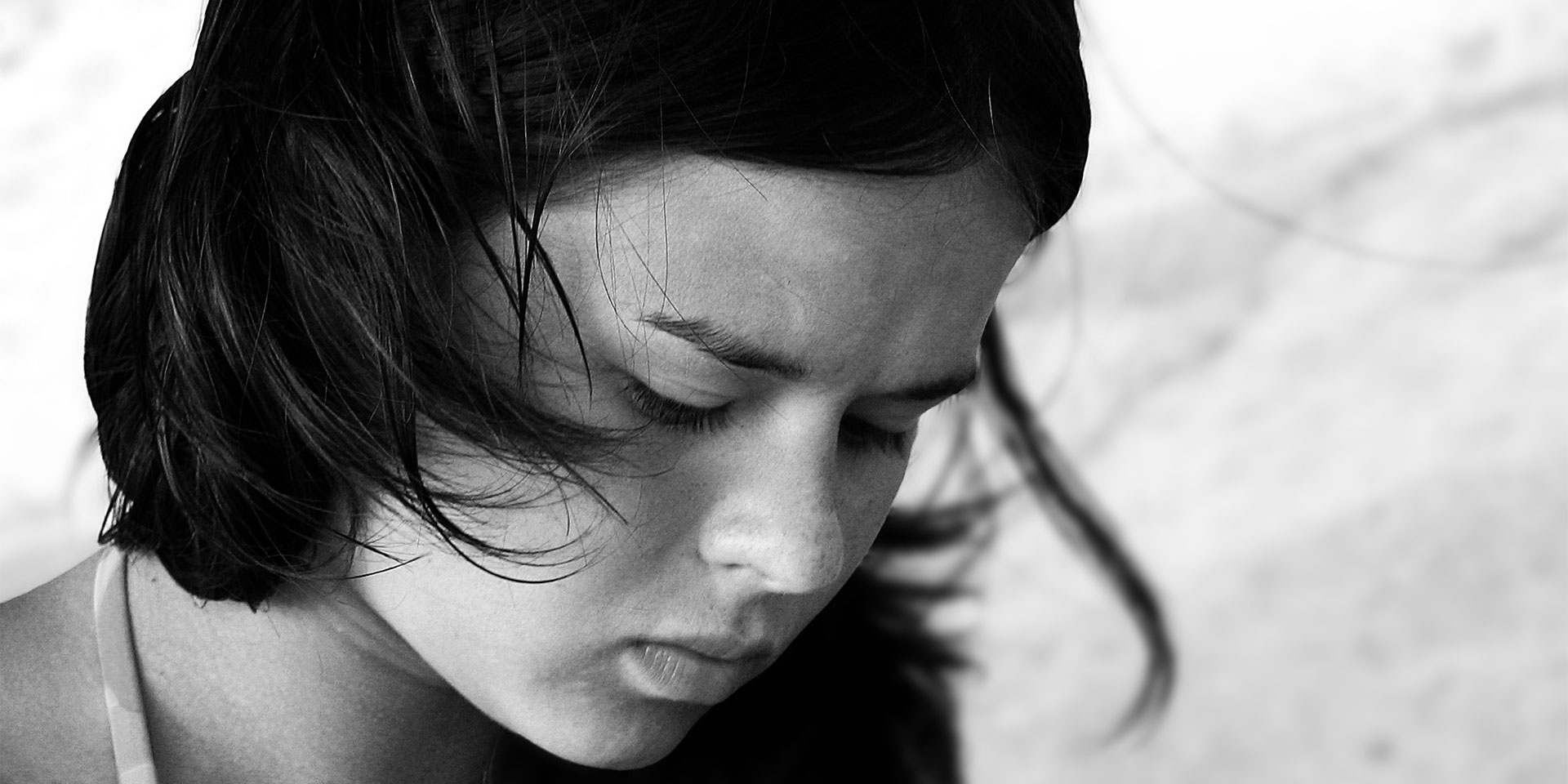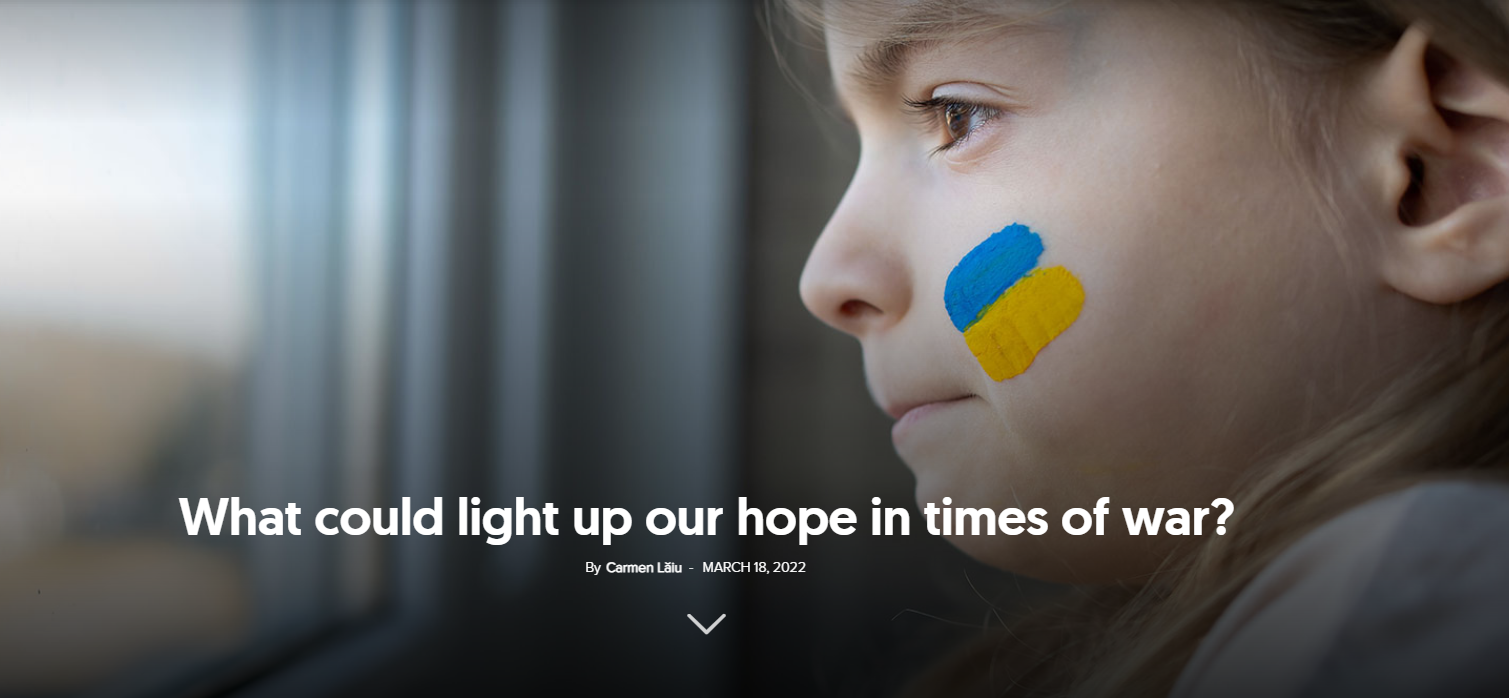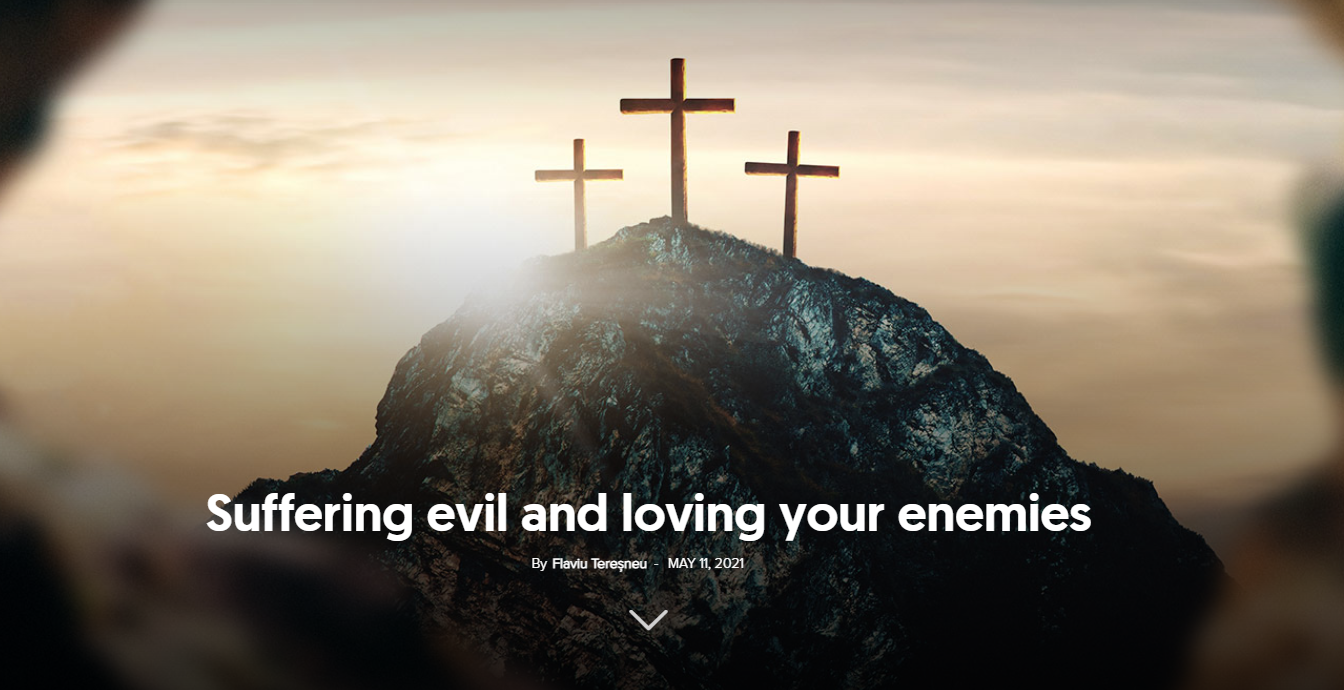Every experience we live teaches us something about the world and God. These lessons are always perfectible. From the pain of other people, however, we learn the wrong lessons so easily.
On July 25, 2019, Alexandra Măceșanu, a 15-year-old girl from a village in Olt County, Romania, called the 112 emergency number in vain, after being abducted, raped, and beaten by a 66-year-old man from Caracal, Romania. The whole country was terrified and outraged to learn how the authorities who could have saved her left the girl in the throes of a terrible death.
The tragedy, still not fully elucidated, was a collective trauma that reminded Romanians of the acute feeling of helplessness they had experienced after the fire in the Colectiv club, in Bucharest, when it later surfaced that many victims who could have been efficiently treated abroad were left hanging by medical decision-makers in inadequate conditions in Romanian hospitals, thus being sentenced to death.
The press constantly provided details about the crime in Caracal, responding to people’s need to know what really happened and feeding that very need at the same time. “Stop keeping the line busy!”—this is a paraphrase of the advice lacking any trace of compassion and professionalism that Alexandra received in one of the repeated calls to 112. This was perceived, in the days following the tragedy, as a painful summary of the Romanians’ relationship with the state.
Desperate calls to lynch the individual in whose yard investigators found the girl’s charred remains mingled on social media with insults directed at the Special Telecommunications Service and police employees, along with calls for street protests against the current political class.
In the well-behaved girl who, during the conversation with the police, still referred to the brute who had raped her using polite words, the Romanians saw themselves, their children, their parents, all deprived of the protection they deserved. Although they had not been victims themselves, the exposure to the tragedy traumatized many Romanians, leaving them with the hard-to-contradict feeling that when faced with adversity, they too would not be rescued.
The suffering and anxiety experienced by people who have not been hit by a certain tragedy themselves, but have seen others hit by it is called, in psychology, “vicarious trauma”. It is the impact that humans feel when they are forced to helplessly witness another human’s pain.
Due to their profession, as witnesses to crisis events of all kinds, journalists are among the professional categories most often affected by this type of trauma.[1] Several psychological studies have shown that, due to their profession, journalists are at increased risk of having post-traumatic stress symptoms. It’s not just the field reporter who gives in mentally seeing the atrocities of a war, but even the editorial journalists, who have access to unfiltered information and public images. Ironically, it was found that the only journalists who are able to sidestep the post-traumatic stress caused by exposure to misfortune are those who are already suffering from depression at the time of exposure.
In the days following Alexandra’s murder, people had access to raw information that a few years ago only journalists had access to. Thousands of people were able to freely browse the dozens of pictures that Alexandra had posted, like any teenager, on her Facebook account and reacted with sad emoticons to all her posts. Hundreds of thousands have accessed the recordings of her calls to 112 on YouTube. No wonder, then, that the Caracal event left such a strong mark on Romanians. The pain of the Măceșanu family was, in those days, everyone’s pain, a glaring pain.
The enemy inside
The overwhelming confusion that sometimes sets in after we come in contact with other people’s pain is a natural condition, and the search for remedies has been a major concern in the psychological research of recent decades. One of the newest and most comprehensive works on the psychosocial support needed by people with vicarious trauma, which appeared in 2018 and was signed by British psychotherapist Fiona Dunkley, explains the subject in very practical terms. While Dunkley focuses her entire volume on the vicarious trauma of charity workers, the author makes numerous observations that may apply to other people affected by vicarious trauma as well.
The psychotherapist explains that after acute stress or trauma, our neurobiology changes, in the sense that the emotional side of the brain comes to dominate the mind, to the detriment of the rational side. In this context, a person who has been through trauma can be consumed by thoughts such as “I’m not good enough,” “I didn’t do everything I could,” or, “I’m the one to blame”. These thoughts, Dunkley says, “might ‘feel’ true, but they are often not based on reality.”[2]
Feelings of powerlessness seem to be a constant in the thinking of depressed people, as noted by psychiatrist Tim Cantopher. In the book Depressive Illness: The Curse of the Strong (2012) he wrote that people who suffer from cumulative stress are actually resilient and strong people. The fact that they are conscientious (as a personality trait), dedicated, and diligent exposes them to the risk of getting sick. The same thing was noticed by Dunkley, who said that “the aid workers who shared their stories with me were not weak; I met strong, passionate, inspiring, and resilient individuals.”
However, the effects of trauma do not take into account the human quality of those affected, who have a special biology. U.S. researcher Douglas Bremner, who studied the impact of trauma on the brain, said that “patients with post-traumatic stress disorder (PTSD) showing smaller hippocampal and anterior cingulate volumes, increased amygdala function, and decreased medial prefrontal/anterior cingulate function.”[3]
These brain changes translate into the manifestation of certain symptoms: a smaller hippocampus means less memory, a hyperactive amygdala means a constant state of alertness, and a slow prefrontal cortex translates into an inability to think logically and act according to circumstances. Therefore, in the aftermath of trauma, it is more difficult for us to focus, maintain our attention, and make decisions. This is also the reason why specialists recommend that we should not rush to make difficult decisions after a traumatic event.
Anomie
“The aftermath of a traumatic event can be just as disturbing as the event itself,” Dunkley says, and “a patient’s view of the world can be fundamentally changed.” This change takes place against the extremely frustrating background of the “surreal silence often following a trauma” and which is in a sonic dissonance with the body, still on alert, of the affected person.[4]
The French sociologist Émile Durkheim has written extensively on the ability of inner dissonance to overthrow personal value systems. Even if the mechanism described by Durkheim concerned the relationship between society and the individual, this relationship pattern can still tell us something very important about how we react to trauma.
Durkheim was the one who consolidated the prestige of the concept of “anomie” in sociology and through it he wanted to describe the toxicity of social disorder for the individuals of a society. Durkheim observed the massive social transformations of the nineteenth century and was convinced that anomie was the people’s response to rapid social change, to the deterioration of traditional institutions, especially those in the economic field, and the changes that led to the general aggravation of social inequality.[5]
When everything an individual knows to be certain and lawful disintegrates, the human reaction is demoralization. If there are no rules, then, as Dostoevsky said, “everything is allowed.” However, when everything is allowed, lawlessness reigns.
From Durkheim’s perspective, anomie is a cultural state of lawlessness, a condition in which the normative structures of society are not sufficient to regulate and control the individual’s ambitions and actions. Durkheim believed that the human’s appetite (their aspirations, desires, goals) are insatiable and therefore impossible and that, through its normative structures (such as laws and customs), society keeps human ambitions in check, or within reasonable limits.
Anomie occurs when these normative structures are too lax in relation to the human appetite and leave humans at the mercy of their unrealizable ideals. That’s why Durkheim believed that anomie could be a precursor to suicide. Other sociologists, such as Robert Merton, argued that it could rather be a forerunner of crime.
However, more interesting for the subject in question is another evolution of the concept, for which Leo Srole is responsible, among others. The American sociologist turned anomie into an individual characteristic (and even proposed a scale for measuring it). If Durkheim and Merton saw anomie as a condition of society, Srole was more concerned with the state of mind of an anomic person, with their sense of alienation, and their tendency to distance themselves from others.
An anomic person has a general negative state, a feeling of dissatisfaction with life, a lack of happiness. Anomic individuals feel defenceless and hopeless when it comes to being able to achieve their goals. They withdraw from the wider social context, giving up their identification with a group to which they belonged.[6]
In all these academic findings, sociologists have encapsulated easily identifiable truths from our traumatic experiences. If we refer only to the case of Caracal, many have almost instinctively asked the following question, hanging between their souls and the tragedy that happened: “Why didn’t God work a miracle?” The question is natural, especially when religious rules make up the normative structure of our lives. In other words, if God is an authority for us, then any event that occurs in a way that is contrary to our expectations will redirect us, with questions, to that authority.
In fact, sociologists acknowledge that, at least in theory, anomie does not find fertile ground in religious circles, because religion facilitates the internalization of certain norms, which contradicts the anomie, which is characterised by a lack of norms, being literally “normlessness”.[7] Moreover, high levels of religiosity have the potential to diminish the effect of other factors (such as socioeconomic status) that would otherwise produce anomie.
Scientists have extensively studied the usefulness of religion as a mechanism for adapting to adverse circumstances. Research has gone into such detail that even a niche topic, such as the relationship between religion and anomie in Protestants versus Catholics, has received the attention of social scientists. Evaluators of that study (which tended to praise one side to the detriment of the other) found that the methodology allowed for only one conclusion, namely that people who take their religion seriously would be safer from anomie than those who treat their own religious standards casually.[8]
Although important, this nuance fails to completely explain why, in the face of similar blows from life, some believers strengthen their faith, while others lose it. Why, for example, did two survivors of World War II atrocities, writer Corrie ten Boom and writer Elie Wiesel, spend the rest of their lives preaching forgiveness to people as a reflection of the forgiveness they have received from God (in ten Boom’s case) or preaching about peace as a desideratum still valid despite the cold indifference of the universe (in Wiesel’s case)?
The truth is that sometimes it is not the quality of one’s faith before a trauma, but the force of the event that decides between faith or anomie after the trauma. Although we have become accustomed to believing the opposite, there are traumas that can shake even a titanic faith.
However, the temptation to accuse the suffering person of unbelief speaks more about our inability to truly understand the dimensions of the evil we experience. Things would be different if we were truly aware that mankind is caught up in a war between Good and Evil and that we Christians have a mission to help save those around us from evil, because then we would not have a respite from our own doubts: Did I do everything I was supposed to do, everything I could do?
But then, even the mere acknowledgment of the Christian faith would expose anyone who believes to vicarious trauma. Because all the suffering in the world—the Caracal-case multiplied by 1000—would target us, Christians who fight on the side of Good, directly.
Permission to heal
The whole earth is groaning in pain. Alexandra’s death just struck closer to home, for Romanian people. As it happens each time tragedy strikes, it makes us see things we once did not see (hitherto incomprehensible dimensions of human suffering) and stop seeing things we once saw clearly (God’s presence and blessing).
If anomie is a natural psychological phenomenon, then we can expect the first reaction to the disintegration of our religious certainties (whether apparent or not) to be an anomic despair, an alienation from those who did not go through what we went through, perhaps even from the church. However, if pain numbs our ability to see God, it means that our inability to see Him beside us, still good and all-powerful, is not the truth. Inability is just inability. If we are aware that not only believers, but all people, are at risk of questioning their values when they are struck by a tragedy, then we could come up with a strategy to help us weather the storm.
We recover and heal, not by trying to gather what is left of a life that, after the pain, we try to face without God, but by allowing ourselves not to make drastic decisions during the pain, as Fiona Dunkley advised her patients. We should allow our brains to recover, allow our minds to restart rebuilding a meaning out of everything that happened, and store the traumatic memories in a controllable form.
If, during the pain, we do not tear down everything we stand on, it is possible, after the wound starts to heal, for us to be able to return home more easily. It is also true that sometimes the house has to be torn down, when its walls are crooked or when its foundation is unsteady and unsafe. However, it is important to never forget that Someone is waiting for us on the doorstep. Even if we do not recognize His presence in what is happening to us, when we meet Him again, we will have no doubt that it was Him all along.
Alina Kartman (36 years old) graduated from the Faculty of Communication and Public Relations at the National School of Political and Administrative Studies in Bucharest (SNSPA), but chose a career in journalism. With hundreds of published analysis materials, she has accumulated over 13 years of editorial experience.



















